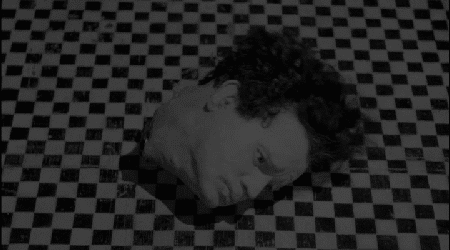Temporary but Unrepentant Umbilical to Furthur Thought-Insanity, Part XXIII
My sub-thesis-rhizome (I will strikethrough sub-thesis if I get to rhizome) is that the use, meaning, value, and significance of totalization changes between the age of Enlightenment and our own age of postmodernity. To investigate, I will look at some uses and definitions of the word totalization, to see how these change over time.
This is for the very specific purpose of understanding: 1)the movement of Carlos-O(1) and Orla-O(1); 2)Enlightenment and postmodernity as haecceity rather than category or periodization of history;3) rhizomes as encounter and sympathy rather than hideous fungal overgrowth, monstrously homogenizing power more horrific than category, theme or metanarrative;4) and to create the encounter of postmodernity and the age of Enlightenment.
1) “Postmodernism should wage a war on totality.”-- Jean-Francois Lyotard.
2) “Myth is totality: the total and complete picture of the real. The temptation to totality. ("From Ionia to Jena," as Franz Rosenszweig puts it in his The Star of Redemption -- that is, from Parmenides to Hegel.) Myth does not cease to be myth when it is rendered in a conceptual form, and at the heart of all myths is something that refuses to be conceptualized. (This is true for conceptual myth-makers like Plato and Hegel. And in our own day, the thirst for conceptual myth-making, such as that of Ken Wilbur or Richard Tarnas, remains unquenchable.)”—Carlos
3) “Sartre had long been fascinated with the French novelist Gustave Flaubert. In what some would consider the culmination of his thought, he weds Existentialist biography with Marxian social critique in a Hegelian “totalization” of an individual and his era, to produce the last of his many incompleted projects, a multi-volume study of Flaubert's life and times, The Family Idiot (1971-1972). In this work, Sartre joins his Existentialist vocabulary of the 1940s and early '50s with his Marxian lexicon of the late '50s and '60s to ask what we can know about a man in the present state of our knowledge. This study, which he describes as “a novel that is true,” incarnates that mixture of phenomenological description, psychological insight, and social critique that have become the hallmark of Sartrean philosophy.” Article about Sartre
4) “Being, as we noted, also is dark indeterminacy. Having suspended the binaries of de facto inside and outside as part of his own phenomenological bracketing,[21] Levinas will approach this indeterminacy not as objectivity, but as something revealed through mood. Whether it is the dark indeterminacy that besets the insomniac self, or whether it is the rustling of nocturnal space, Being's dark aspect horrifies us. “The things of the day world then do not in the night become the source of the ‘horror of darkness’ because our look cannot catch them in their ‘unforeseeable plots’; on the contrary, they get their fantastic character from this horror. Darkness…reduces them to undetermined, anonymous being, which they exude” (EE, 54). This anonymous being, also called the il y a [there is], does not ‘give’ the way Heidegger's Being does. And it is not revealed through mere anxiety. Nevertheless, it is a beginning. Insomniac and in the throes of horror, the hypostasis falls asleep. Or again, it lights a light and reassembles its consciousness. It “sobers up.” Therein lays our first, constitutive escape from neutral Being. But the il y a gives the lie to the question: Why is there Being instead of simply nothing? Nothing, as pure absence, may be thinkable, but it is unimaginable. Indeterminate Being fills in all the gaps, all the temporal intervals, while consciousness arises from it in an act of self-originating concentration. This is the first sketch of Being as totality. The self-‘I’ dyad becomes a limited transcendence arising in the midst of the self's encompassing horror. It hearkens to a call that comes not from neutral Being but from the Other. The stage is thus set for Totality and Infinity's elaborate analyses of world, facticity, time as now-moment, transcendence in immanence, and transcendence toward future fecundity. These themes constitute the core of Totality and Infinity: An Essay on Exteriority.”Article about Levinas
5) “Levinas's first book-length essay, Totality and Infinity (1961), was written as his Habilitation or Doctorat d'État.[22] Transcendence is a significant focus of Totality and Infinity, coming to pass in the face-to-face relationship. For Levinas, to escape deontology and utility, ethics must find its ground in an experience that cannot be integrated into logics of control, prediction, or manipulation. Whether it takes the form of the conscious ‘fit’ between subject and object in Husserl's phenomenology, or whether a unity of mind and being evolves dialectically, rational activity can never become ‘angelic’. That is, it cannot step outside the totalizing logics of metaphysical systems, without supposing them or restoring them. There is no formal bridge, for Levinas, between practical and pure reason. Philosophy in the twentieth century (Heidegger, the Frankfurt School, deconstruction) has shown, at least, that the universality of concepts and the necessity carried by transcendental arguments are simply not sufficient to prevent the triumph of ends-rationality and instrumentalization. Ethics is therefore either an affair of inserting particulars into abstract scenarios, or ethics itself speaks out of particularity about the first human particularity: the face-to-face relationship.”Article about Levinas


0 Comments:
Post a Comment
<< Home